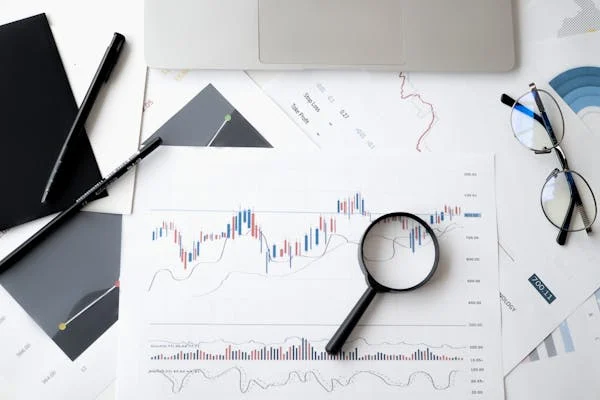Startup acquisitions are changing fast. The traditional giants of startup M&A are now sharing the spotlight with emerging markets that are growing quickly and attracting serious investor attention. These new hotspots are shaping where innovation flows and where the next big deals are born.
1. 62% of startup acquisitions in 2024 occurred outside the U.S., highlighting growing global M&A activity.
The Global Shift in Startup M&A
For a long time, the U.S. was the go-to hub for startup M&A. But that’s no longer the full story. With 62% of all startup acquisitions now happening outside the U.S., it’s clear the global game has changed.
This shift isn’t random. It’s a reflection of how quickly markets around the world are innovating, scaling, and becoming acquisition-ready. It’s also a sign that major buyers — from tech giants to regional leaders — are now hunting for strategic growth outside their traditional strongholds.
Why It Matters for Founders
If you’re building a startup today, location still matters — but not the way it used to. Being in Silicon Valley or New York used to give startups a major edge. Now, being in Lagos, Jakarta, São Paulo, or Cairo can be just as strategic if you’re solving a real, local problem in a scalable way.
This shift means more opportunities for exits, even if you’re not based in the U.S. Buyers are looking for product-market fit, user growth, and tech that fits their expansion goals — not just your ZIP code.
Tactical Advice
- Focus on regional traction. If you’re in an emerging market, lean into your understanding of local pain points. This can make your startup more attractive than a global competitor trying to break into your space.
- Build in English early. Even if you’re targeting a local audience, a bilingual or English-first product can make M&A discussions easier with international buyers.
- Start investor relations early. U.S. and European buyers often want a long-term view before making an acquisition offer. Start forming relationships well before you’re looking to sell.
2. India saw a 47% year-over-year increase in startup acquisitions in 2023.
India’s M&A Engine is Picking Up Speed
India’s startup scene has matured quickly. With a 47% increase in acquisitions, it’s no longer just about unicorns and IPOs — strategic exits are now a big part of the ecosystem. The rise in M&A activity shows growing confidence in Indian startups’ ability to scale, solve core problems, and offer good return potential.
From SaaS and fintech to healthtech and deep tech, the acquisition interest is diverse. Buyers include Indian corporates, Southeast Asian giants, and Western tech firms looking to expand across Asia.
Why India Is in Demand
India offers a massive, mobile-first consumer base, world-class tech talent, and a growing middle class. For acquirers, this means two things: startups can scale, and they can do it cheaply compared to Western peers.
Many Indian startups have also become global in mindset — serving customers across the world, pricing in dollars, and building scalable infrastructure.
Tactical Advice
- Build cross-border compatibility. Make your tech stack easy to integrate with potential acquirers, especially if you’re in SaaS or infrastructure tech.
- Think acquisition-first. Many startups raise with a mindset of going public. But in India, M&A is becoming a faster, safer, and often more lucrative outcome.
- Don’t ignore local buyers. Many Indian conglomerates are launching innovation arms and acquiring startups to stay competitive. They may not be as flashy as global buyers but can offer a faster path to exit.
3. Southeast Asia’s tech acquisition volume grew by 39% in 2024, led by Indonesia and Vietnam.
Southeast Asia is Heating Up
Southeast Asia is no longer a sleeping giant. With a 39% growth in tech acquisitions, the region is proving to be a goldmine of innovation. Indonesia and Vietnam are leading the pack — not just in user growth but in startup exits too.
A combination of government support, foreign capital inflow, digital adoption, and mobile-first behavior is driving the region forward. It’s a land of unmet demand and fast digitization, which makes it a target-rich environment for buyers.
What’s Driving This Trend?
There are a few big factors. First, mobile internet penetration is nearly universal in some countries, giving tech products fast adoption. Second, rising income levels are unlocking new verticals like fintech, e-commerce, healthtech, and education.
And most importantly, startups are maturing. What used to be small, underfunded companies are now well-funded, revenue-generating firms solving regional problems. Acquirers love this.
Tactical Advice
- Go regional early. Building for one Southeast Asian market is good. But if you build your product to work across languages and regulations in multiple SEA countries, you’ll be far more valuable to buyers.
- Understand acquirer profiles. Many buyers in the region aren’t tech companies — they’re traditional businesses modernizing through acquisitions.
- Keep your books clean. Buyers in Southeast Asia are increasingly focused on post-deal integration. Strong documentation and legal hygiene will make your startup stand out.
4. Latin America’s startup exits via acquisition rose 31% in 2024 compared to 2022.
Latin America Is Ripe for Deals
Latin America has long been known for its strong entrepreneurial spirit. But now it’s finally turning that energy into real exit opportunities. A 31% increase in acquisitions is a sign of growing maturity in the region’s startup scene.
More importantly, it’s a signal to global and regional buyers that this is no longer a market to ignore. Brazil, Mexico, Chile, and Colombia are now homes to startups that scale across borders, attract global capital, and become prime targets for M&A.
What’s Fueling the Trend?
Investors are more familiar with the market, and there’s more local capital staying in the region. Infrastructure has improved, and regulatory environments are stabilizing in several countries. Also, more U.S. and European companies are using Latin America as a launchpad into the broader Americas.
Another factor is the rise of digital services across finance, logistics, healthcare, and education. Latin American startups are solving foundational problems in these sectors, making them very appealing for strategic buyers.
Tactical Advice
- Focus on regional defensibility. If you’re in Mexico, make sure you’re not just building a good product — build one that works better in your country than anything imported from the U.S. That local edge is your moat.
- Think in stages. Many Latin American startups are seeing multi-step exits — starting with strategic partnerships, then minority investments, and finally full acquisition. Plan your cap table and investor relationships accordingly.
- Strengthen compliance. While buyers are excited about Latin America, they are also cautious. Legal clarity, tax compliance, and transparent governance can make you a much easier acquisition target.
5. 70% of Africa-based startup acquisitions in 2023 involved fintech or mobile money firms.
Fintech Is the Crown Jewel of African M&A
Fintech is driving the majority of startup exits in Africa — and it’s not even close. With 70% of all acquisitions touching fintech or mobile money in 2023, the message is clear: solve money movement, and you’ll get bought.
From Lagos to Nairobi, startups are helping millions of users access digital payments, credit, insurance, and cross-border remittances. This isn’t just innovation — it’s infrastructure. And buyers want in.
Why Fintech Leads
Most of Africa still operates in cash or informal financial systems. Startups offering digital alternatives are creating new infrastructure, leapfrogging traditional banking. This makes them not just profitable but essential.
Also, many buyers — including large banks and telecom firms — can’t build these solutions fast enough themselves. Acquiring a fintech startup is often quicker and cheaper than building in-house.
Tactical Advice
- Regulation matters. In Africa, fintech is a highly regulated sector. Work closely with local regulators early to avoid issues later that could scare off acquirers.
- Partnerships win. Most fintech exits in Africa aren’t purely about the product. They’re about distribution. Align with mobile network operators, banks, or retail chains to build scale that acquirers will find valuable.
- Track user behavior closely. Data around usage frequency, transaction volume, and retention is more persuasive than revenue alone in this space. Build dashboards that tell your growth story clearly to potential buyers.
6. Middle East and North Africa (MENA) recorded a 45% increase in startup acquisition deals in 2024.
MENA Is Becoming a Strategic Hub
A 45% rise in M&A activity is a big deal for the MENA region. It signals a strong move toward exit-driven innovation. Countries like the UAE, Saudi Arabia, Egypt, and Jordan are becoming M&A-ready — both as sellers and buyers.
This surge is backed by strong government support, rising startup investment, and a maturing tech ecosystem. But more than anything, it’s driven by a regional hunger for technology that can scale and serve growing digital populations.
What’s Changing in MENA?
The last five years have seen the creation of accelerators, venture funds, and even dedicated acquisition programs funded by sovereign wealth entities. At the same time, startups are solving highly local challenges — from logistics in desert climates to Arabic-first health platforms.
More buyers are also emerging from within the region. Large conglomerates and government-backed tech programs are actively acquiring startups to speed up their digital transformation.
Tactical Advice
- Build local, scale regional. MENA buyers are looking for startups that solve problems they understand. Focus on one country first, then show how your solution scales across borders.
- Create government links early. In the MENA region, relationships matter. Many acquirers are state-linked or influenced by public-private dynamics. Having early contacts can speed up your deal timeline.
- Watch payment and hiring structures. Some startups lose deals in MENA because their payroll, IP, or legal entity structures are hard to unwind. Clean up your corporate structure with M&A readiness in mind.
7. Cross-border deals made up 58% of emerging market startup acquisitions in 2023.
The Rise of Cross-Border Acquisitions
More than half of all startup acquisitions in emerging markets are now cross-border. This means the buyer and seller are based in different countries. It’s a major shift from earlier years when local players dominated the scene.
This stat reveals something very important — startups in emerging markets are no longer building just for their city or even their country. They’re building solutions that attract interest from across the globe. And buyers, especially those in saturated markets, are increasingly willing to look abroad for growth.
What’s Driving Cross-Border Deals?
Many global firms are facing slower growth at home. They’re now looking to new markets for users, innovation, and efficiency. Emerging markets offer all three — plus attractive pricing on deals.
At the same time, technology has made it easier to scale across borders. Cloud infrastructure, remote teams, and digital products allow startups to grow regionally without huge capital outlays.
Tactical Advice
- Think like a global buyer. If someone in another country were evaluating your startup, would they understand your metrics, product roadmap, and value? Make sure your data rooms and pitch decks speak the global language of KPIs.
- Reduce reliance on local nuances. Buyers from abroad may not fully understand local regulation, payment systems, or consumer behaviors. Document these clearly and show how your product overcomes local complexity.
- Engage international lawyers early. Cross-border M&A is tricky. The right legal setup — from IP protection to entity location — can save months of headaches and make you easier to acquire.
8. Over 50% of acquisitions in emerging markets are driven by strategic buyers, not financial buyers.
Strategic Buyers Are Taking the Lead
Strategic buyers — companies that want to integrate your product, team, or market — are leading the charge in emerging markets. They now account for more than half of all acquisitions.
This is different from financial buyers like private equity firms, who focus on flipping businesses for profit. Strategic buyers care about long-term value. They want to own a piece of innovation that helps them grow their core business.
Why This Shift Matters
Strategic buyers usually pay a premium. They aren’t looking just at your profits. They look at your tech, market position, and the synergies you bring to their existing setup. This often means better deal terms, longer integration support, and more operational alignment.
They also tend to move faster than financial buyers. If your startup fills a real need in their product roadmap or geographic expansion plan, they will act quickly to avoid losing the opportunity.
Tactical Advice
- Map your strategic value. Who needs your tech or market access? Don’t just wait to be discovered — identify potential acquirers early and build relationships before you need to sell.
- Package your startup as a product, not just a company. Strategic buyers are buying capabilities. Make it easy for them to imagine plugging your team or tech into their operation.
- Prepare for deeper due diligence. Strategic buyers may ask more detailed questions than VCs or angels. Be ready with detailed operations documents, HR info, and scalability plans.
9. China’s outbound acquisitions of startups dropped 23% in 2023 due to regulatory tightening.
A Pause in China’s Global Buying Spree
For years, Chinese firms were some of the most active acquirers of startups around the world. But in 2023, outbound deals from China dropped sharply — by 23%. The cause? Stricter domestic regulations and increasing geopolitical pressure.
This doesn’t mean Chinese capital has disappeared. But it does mean startups that once expected Chinese buyers at the table need to adjust their strategies. And it signals a broader trend of regional players stepping in where China once dominated.
What It Means for Startups
If you were hoping for a Chinese buyer, you’ll need to recalibrate. Chinese companies are still buying — but they’re being more selective, slower, and often limited to friendly markets.
On the flip side, this opens the door for other buyers. Japanese, South Korean, and Southeast Asian firms are actively filling the vacuum in Asia. Western companies, too, are re-engaging in regions where Chinese interest has cooled.
Tactical Advice
- Diversify your acquirer pipeline. Don’t rely on one geography for your exit plan. Build relationships with buyers in multiple regions, even if you think one area is your best bet.
- Stay informed on foreign policy. Regulatory and geopolitical shifts can affect how easily deals get approved. Understanding these trends early can help you shape your M&A timing and structure.
- Explore joint ventures or partnerships first. If full acquisition is difficult due to restrictions, starting with a strategic alliance can open doors to future deals — even in a complex market like China.
10. Nigeria ranked #1 in Africa for number of startup exits via acquisition in 2024.
Nigeria Leads Africa’s Startup Exit Scene
Nigeria has climbed to the top of the chart for startup exits in Africa. This isn’t by accident. It’s the result of a mature ecosystem, growing VC activity, and startups solving deep infrastructure challenges — especially in finance, logistics, and energy.
Being #1 means something important: the Nigerian ecosystem is no longer just a launchpad — it’s an exit environment. Startups are being acquired by global players, regional giants, and local incumbents trying to stay relevant.
Why Nigeria?
Nigeria’s large population, tech-savvy youth, and growing smartphone penetration make it one of the continent’s most vibrant markets. In fintech alone, Nigerian startups have built products that serve tens of millions of users.
Plus, Nigeria’s founders are increasingly global in mindset. Many incorporate abroad, raise internationally, and build products that scale beyond local borders. This makes them much more attractive to acquirers.
Tactical Advice
- Register your IP carefully. Many Nigerian startups incorporate in the U.S. or UK but operate locally. Make sure your intellectual property is clearly assigned and protected — buyers will always ask.
- Build for scalability, not just hustle. Nigerian startups are known for creativity and speed. But if your backend isn’t built to scale or your compliance is messy, it can scare off a serious acquirer.
- Create clarity on currency exposure. Many Nigerian companies earn in naira but raise or report in dollars. Show how you manage forex risk to build buyer confidence.
11. 60% of startup acquisitions in Latin America involve buyers from the U.S. or Europe.
Latin American Startups Are Attracting Global Buyers
Most startup acquisitions in Latin America now come from outside the region. That means global companies — mostly from the U.S. and Europe — are buying into LATAM innovation at scale. In fact, they account for 60% of all M&A deals in the region.
This trend shows how Latin American startups are no longer isolated. They’re building products and growth models that resonate with international players. And those players are paying attention.
Why This Matters
U.S. and European firms see Latin America as the next frontier. It’s a large, young, digital-first population. It’s underbanked and underserved in many sectors. And local startups are solving these challenges with tech that often leapfrogs old infrastructure.
These global buyers aren’t just investing — they’re buying outright. They want to gain quick access to customers, talent, and tech stacks that would take years to build from scratch.
Tactical Advice
- Localize with a global lens. Your UX might be in Spanish or Portuguese, but your data, metrics, and compliance should be ready for international review.
- Be bilingual with your investor materials. Having English versions of your pitch deck, P&L, and data room makes you immediately more attractive to U.S. or EU buyers.
- Watch your cap table. International buyers want clean equity structures, low legal risk, and a clear path to ownership. Remove inactive co-founders and document vesting clearly.
12. Vietnam’s startup acquisition deal count grew by 52% in 2024, led by gaming and SaaS sectors.
Vietnam’s Startup Scene is Exploding
Vietnam is on fire. A 52% spike in startup acquisitions — mostly in gaming and SaaS — tells the story of a fast-growing, fast-maturing ecosystem.
This growth is driven by a young, digital-native population and a founder class that is increasingly global. Vietnam has become a top destination for both product-led growth companies and dev-heavy businesses.
Why Gaming and SaaS?
Gaming is deeply rooted in Vietnamese culture and tech expertise. Studios are building games for global audiences, monetizing through ads and in-app purchases. Meanwhile, the SaaS market is serving regional SMEs with tools for HR, accounting, and operations — a massive and growing market.
These sectors are scalable, recurring-revenue driven, and often lightweight on capital. That makes them extremely attractive for acquisition, especially from buyers in neighboring countries or global mid-market tech players.
Tactical Advice
- Focus on clean user data. Gaming and SaaS buyers want to see retention, usage frequency, and monetization per user. Invest in dashboards and tracking early.
- Consider hybrid pricing models. Many SaaS companies in Vietnam win big by combining subscription with usage-based pricing — this flexibility boosts M&A appeal.
- Protect your dev team. Vietnamese engineering talent is world-class and often the real value in the deal. Make sure team members are locked in with solid contracts and retention incentives.
13. 3 out of 5 acquired startups in emerging markets had previously raised less than $5 million.
Smaller Fundraises, Bigger Outcomes
In emerging markets, you don’t need to raise a fortune to build something valuable. A surprising 3 out of 5 startups that were acquired in recent years had raised less than $5 million. This breaks the myth that only highly funded startups can get acquired.
These lean startups often focus on solving real, immediate problems. They move fast, stay close to customers, and build efficient businesses. This agility makes them attractive to buyers who want speed and flexibility, not bloated valuations.
Why Buyers Love Lean Startups
Small fundraises usually mean smaller cap tables, fewer investor rights, and cleaner ownership structures. That makes the M&A process faster and less risky.
It also means the startup likely hasn’t over-engineered their product or over-expanded too soon. Buyers see these companies as more adaptable — easier to integrate, less expensive, and closer to profitability.

Tactical Advice
- Raise only what you need. Focus on traction, not just valuation. If you can prove product-market fit early, buyers won’t care that you didn’t raise $20 million.
- Keep your operations light. Use no-code tools, automation, and contract-based work where possible to stay lean and profitable — especially in the early days.
- Document everything. Smaller startups often cut corners on legal or HR work. Clean up your contracts, equity agreements, and customer data now. It will pay off during due diligence.
14. Egypt recorded a 40% year-on-year increase in startup exits in 2024.
Egypt’s Exit Market Is Gaining Momentum
Egypt is quickly becoming one of the most dynamic startup markets in North Africa. With a 40% increase in exits in just one year, the country is now firmly on the M&A map for regional and international buyers.
Egyptian startups have been especially strong in logistics, mobility, fintech, and e-commerce — sectors that are foundational for a growing middle class and a digital-first economy.
What’s Fueling This Growth?
A mix of local demand, government support, international VC interest, and a strong university system that produces technical talent. Egypt also serves as a natural bridge between the Middle East and Africa, making it strategically important for expansion-minded buyers.
Startups here are building infrastructure, not just products. They’re helping people move goods, pay digitally, and access services in ways that didn’t exist a few years ago.
Tactical Advice
- Nail your Egypt-to-GCC story. Many acquirers are based in the Gulf but want to expand into Africa. Show how your Egypt base gives them that launchpad.
- Build local trust. In Egypt, word-of-mouth and reputation matter a lot. Strong relationships with regulators, suppliers, and customers can make your startup far more attractive to regional acquirers.
- Manage currency and inflation risk. Egypt’s macroeconomic environment can be volatile. Buyers will want to see how you’ve insulated your pricing, payroll, and margins from local economic shifts.
15. 42% of startup acquisitions in Africa in 2023 targeted logistics or e-commerce enablers.
Infrastructure Is the Real Opportunity
Nearly half of all startup acquisitions in Africa last year were focused on logistics and e-commerce infrastructure. These aren’t glamorous consumer apps. They’re the behind-the-scenes engines that power growing digital economies.
From delivery tech to warehouse management to cross-border payment tools — startups that solve infrastructure pain points are in hot demand. They help buyers expand faster, cheaper, and with more reliability.
Why This Matters for Founders
It’s easy to chase shiny B2C ideas. But in Africa, the real money — and the exits — are often found in the trenches. If you can solve supply chain inefficiencies, enable last-mile delivery, or improve merchant onboarding, buyers will come looking for you.
These startups often have recurring revenue, enterprise customers, and real defensibility. That’s exactly what acquirers are hunting for.
Tactical Advice
- Get operational metrics right. Acquirers will care about delivery speed, order accuracy, failure rates, and cost per fulfillment. Start tracking these early.
- Build B2B relationships. Many logistics and e-commerce enablers succeed by selling to businesses, not consumers. Focus your sales team and onboarding efforts on enterprise customers.
- Offer modular solutions. The more plug-and-play your tech is, the easier it is for a larger company to acquire and integrate it. This increases your exit potential significantly.
16. The UAE accounted for 33% of all MENA startup acquisitions in 2023.
The UAE Is MENA’s M&A Powerhouse
One-third of all startup acquisitions in the Middle East and North Africa in 2023 happened in the UAE. That’s a massive share for one country — and it shows how much the Emirates have positioned themselves as the region’s center for innovation and deal-making.
Dubai and Abu Dhabi, in particular, have invested heavily in building tech ecosystems with friendly regulations, open banking, government-backed VC funds, and accelerator programs. That’s created a dense network of startups and acquirers, all under one roof.
Why the UAE Leads
The UAE’s infrastructure is built for business. Founders can register companies quickly, raise capital easily, and access top-tier talent. For buyers, this means the startups they acquire are often ready to scale, with fewer hidden risks.
Also, the country’s geographic position makes it a launchpad to Africa, South Asia, and the broader Middle East. That’s why many international buyers are setting up regional offices in Dubai — and scouting acquisition targets while they’re there.
Tactical Advice
- Incorporate smartly. UAE free zones offer attractive terms for startups — including full foreign ownership and zero taxes. Buyers prefer these setups because they reduce post-deal complications.
- Be acquisition-ready from day one. Many UAE-based acquirers move fast. If your legal, financial, and product documents are disorganized, you’ll lose deals to startups that are better prepared.
- Join the right communities. Many M&A deals in the UAE start from personal connections. Attend startup events, join incubators, and stay close to the investor circles in Dubai and Abu Dhabi.
17. 48% of emerging market startup acquisitions were executed by companies in Series C or later.
Later-Stage Startups Are Buying Too
Nearly half of all startup acquisitions in emerging markets are now being made by other startups — especially those that have raised Series C or beyond. These are companies that have found product-market fit, raised large rounds, and are now growing through acquisitions.
This trend shows that it’s not just corporates or private equity firms doing the buying. Well-funded startups are also acquiring smaller players to speed up their growth, enter new markets, or add talent.
What’s Driving This Behavior?
Startups that raise big rounds often need to show expansion fast. Building new teams or products takes time. Acquiring smaller, scrappier teams is faster and more efficient.

It’s also strategic. Many Series C startups face pressure to grow into new regions. Acquiring a local competitor with traction is often the simplest path. This trend is especially strong in sectors like fintech, SaaS, and healthtech.
Tactical Advice
- Look at your peers as potential buyers. If there’s a larger startup in your region or sector that just raised a big round, they might be your best exit path. Track their moves and build relationships early.
- Keep your tech modular. Later-stage startups often want to integrate your product into their stack. Use clean APIs, cloud infrastructure, and scalable codebases to make your solution easier to acquire.
- Be realistic with your valuation. Peer-to-peer startup acquisitions don’t always offer massive multiples. But they can offer quick deals, earn-outs, and long-term upside if you join the buyer’s journey.
18. Latin American healthtech acquisitions increased by 56% in 2024.
Healthtech Is Booming in Latin America
Healthtech is having a breakout year in Latin America. With a 56% increase in acquisitions in just one year, it’s clear this sector is gaining traction. And it’s not just small deals — global and regional players are buying startups that bring real innovation to outdated healthcare systems.
From telemedicine to pharmacy delivery to AI-based diagnostics, Latin American startups are building solutions that fill major gaps. These companies are solving real problems in affordability, accessibility, and efficiency.
Why Healthtech Now?
The pandemic accelerated digital health adoption. Patients, providers, and insurers are now more open to using technology to improve outcomes. In Latin America, where healthcare access is often uneven, tech provides a scalable way to reach more people.
This makes healthtech startups ideal acquisition targets for insurers, hospitals, global healthtech firms, and even big tech companies entering the healthcare space.
Tactical Advice
- Show regulatory clarity. Healthcare is highly regulated. Document how you handle patient data, compliance, and local medical regulations. Buyers won’t move forward if these pieces are unclear.
- Focus on real outcomes. Metrics like user growth or revenue are good, but healthtech buyers want to see how your product improves efficiency, reduces cost, or improves care quality. Make this part of your pitch.
- Explore non-traditional buyers. Some acquirers are not in healthtech today — like logistics firms entering prescription delivery or SaaS companies targeting clinics. These outsiders can become serious acquirers if your product extends their reach.
19. Kenya experienced a 38% rise in startup exits in 2023, mostly in agtech and cleantech.
Kenya’s Innovation Roots Are Bearing Fruit
Kenya is no stranger to innovation. Known as the Silicon Savannah, the country has led East Africa in mobile money, digital services, and now — startup exits. A 38% increase in acquisitions in just one year shows the ecosystem is maturing.
Most of these exits are in agtech and cleantech. These aren’t hype-driven sectors. They’re practical, necessary, and deeply local. That’s exactly why buyers — both global and regional — are now paying attention.
Why Agtech and Cleantech?
Agriculture is still a core part of the Kenyan economy. Startups are helping farmers improve yields, get better prices, and access financial services. Cleantech startups are solving energy access issues with off-grid solar, battery storage, and energy-as-a-service models.
These are not just innovative — they’re foundational. And acquirers want in on the infrastructure shaping Kenya’s future.
Tactical Advice
- Focus on resilience. In agtech and cleantech, buyers want to see that your business can handle seasonality, regulation, and market shocks. Build models that are adaptable and documented.
- Partner with government and NGOs. Many successful Kenyan startups work closely with the public sector or development organizations. These partnerships often make you more attractive by reducing risk and expanding your reach.
- Track real-world impact. If your solution saves water, reduces emissions, or improves harvests, measure it. Buyers in these sectors care about environmental and social outcomes as much as financial ones.
20. Brazil led Latin America in startup acquisitions for the third consecutive year in 2024.
Brazil Continues to Set the Pace
For the third year in a row, Brazil has topped Latin America in startup acquisitions. It’s no surprise. With its large population, vibrant fintech scene, and deep pool of tech talent, Brazil has become the region’s most consistent startup engine.
From São Paulo to Florianópolis, startups are growing fast — and exiting faster. Acquirers range from local unicorns and family-owned corporations to U.S.-based tech firms and global strategics.
Why Brazil Dominates
Brazil has a huge internal market. That means startups can reach scale without needing to expand internationally — which increases their attractiveness to local buyers. It also has a strong base of early-stage VCs and repeat founders who understand how to build and exit.
Sectors like fintech, healthtech, edtech, and logistics are booming, thanks to regulatory shifts, infrastructure development, and increased digital adoption post-COVID.

Tactical Advice
- Build in Portuguese, scale in English. Brazil’s market rewards local understanding, but having English-ready ops (especially in SaaS) can open doors for global acquirers.
- Nail compliance. Brazil has complex tax and labor laws. Buyers want startups that have clear documentation, proper registrations, and no hidden liabilities.
- Use Brazil as a case study. If you’re scaling into other LATAM countries, show how you won Brazil first. That narrative of conquering the most difficult market is compelling for acquirers.
21. Singapore was involved in 64% of Southeast Asia’s cross-border startup M&A deals in 2023.
Singapore Is Southeast Asia’s M&A Launchpad
Singapore is punching far above its weight. Though small in size, it played a role in 64% of all Southeast Asia’s cross-border startup acquisitions in 2023. That includes deals where either the acquirer or the target was Singapore-based.
This shows how critical the city-state has become as a regional hub for capital, talent, and M&A activity. Its legal clarity, tax benefits, and startup-friendly policies attract founders from across Asia — and buyers from around the world.
Why Singapore?
Singapore offers stability in an otherwise fragmented region. It has world-class banking, easy cross-border setup, and strong intellectual property protections. That makes it a top choice for startups to incorporate and scale from.
Buyers — especially from the U.S., Japan, and Europe — often view Singapore as a beachhead into Asia. Acquiring a startup there helps them understand the region while benefiting from solid governance and minimal red tape.
Tactical Advice
- Incorporate in Singapore early. If you’re based in Southeast Asia, moving your holding company to Singapore can make future acquisitions smoother and more tax-efficient.
- Keep clean records. Singapore’s regulatory environment is strict — but that’s part of its appeal. Ensure your books, board resolutions, and employee contracts are up to date.
- Use Singapore’s networks. The city has a dense network of accelerators, law firms, bankers, and VCs. Being visible in this ecosystem can connect you to buyers faster than in most other SEA countries.
22. 40% of buyers acquiring emerging market startups are based in Western Europe.
Western Europe Is Quietly Leading Global Expansion
While much of the attention in global startup acquisitions focuses on the U.S. or Asia, Western Europe is steadily increasing its presence — now accounting for 40% of acquisitions in emerging markets. This is an important shift. European buyers, once focused inward, are now looking outward for innovation, growth, and cost-effective scale.
These buyers often include large corporates, mid-sized tech companies, and even family-owned businesses looking to modernize quickly. They see emerging markets as a way to add new users, new revenue, and in some cases, entirely new business models.
Why Western Europe Is Moving In
One reason is stagnation at home. Many Western European markets are mature, saturated, and highly regulated. Growth is hard to find, so companies are going global. Emerging markets, especially in Africa, Latin America, and Southeast Asia, offer what European firms need: new users, mobile-first behavior, and innovation under constraints.
Another factor is cultural and regulatory alignment. European acquirers are often drawn to markets where governance is improving, privacy laws are strengthening, and digital infrastructure is becoming more standardized.
Tactical Advice
- Create materials in multiple languages. English is fine, but buyers from Germany, France, and Spain may appreciate pitch decks or product guides in their native language. It shows you’re serious and ready to engage.
- Learn how EU buyers think. They tend to be risk-sensitive and compliance-driven. Showcase your legal structure, customer privacy standards, and internal governance as key selling points.
- Find your European match. Many mid-sized European tech firms don’t have M&A teams. That means your best path to acquisition may come through partnerships, resellers, or joint projects first — and then evolve into a full buyout.
23. Africa’s startup M&A volume quadrupled from 2019 to 2024.
Africa’s Exit Market Is No Longer in Beta
In just five years, Africa’s M&A volume in the startup world has grown by 4x. That’s not just growth — it’s transformation. The continent’s startup scene is no longer just about MVPs and seed rounds. Founders are now building with exits in mind — and deals are actually happening.
This shift is powered by increased VC presence, better legal frameworks, more corporate engagement, and a generation of founders with global exposure. It also reflects broader investor confidence: Africa is no longer just the future — it’s the present.
What’s Changed Since 2019?
Back then, most startups were underfunded, lacked infrastructure, and had very few exit paths. Today, there’s a growing class of scale-stage startups, some with revenues over $10 million. More importantly, there are now buyers — both local and international — actively shopping in the region.
Also, the regulatory environment has matured. Countries like Kenya, Nigeria, Egypt, and South Africa have improved frameworks for IP protection, tax law, and startup incorporation. These make M&A deals smoother and less risky.

Tactical Advice
- Build with documentation in mind. Many African founders run lean, which is great — but don’t skip on data rooms, IP assignments, or proper employment contracts. These are essential in an M&A-ready company.
- Think multi-country from day one. Buyers like to see startups that can scale regionally, not just nationally. Even a small pilot in a neighboring country helps boost your valuation and M&A appeal.
- Leverage local and global advisors. There’s a growing pool of African M&A lawyers, accountants, and startup brokers who understand both sides of the table. Get them involved early — they can help you avoid costly mistakes.
24. Over 80% of acquired startups in emerging markets operated in mobile-first sectors.
Mobile-First Startups Are Leading the Exit Game
In emerging markets, mobile-first isn’t just a trend — it’s the standard. More than 80% of startups that were acquired operated in sectors where the phone is the primary (and often only) touchpoint. That includes fintech, e-commerce, edtech, and logistics.
This makes sense when you consider how people in these regions access the internet. Mobile data is the gateway to the digital world. And startups that prioritize this experience win users, grow faster, and get acquired more often.
Why Mobile-First Matters
Acquirers want startups that align with the realities of their target market. In countries where broadband is expensive or unreliable, mobile isn’t optional — it’s essential. That’s why acquirers look for startups with slick mobile UIs, low data usage, and SMS or WhatsApp-based support.
Also, mobile-first startups often have clearer analytics. It’s easier to measure DAUs, retention, and conversion on mobile, which gives acquirers better confidence in the deal.
Tactical Advice
- Optimize for low-end devices. Many users in emerging markets don’t have flagship phones. Build apps that work offline, load quickly, and don’t drain battery. Buyers look at user feedback and uninstall rates — performance matters.
- Use mobile-native distribution. Think beyond app stores. USSD codes, WhatsApp bots, and telco partnerships are all viable distribution models that can massively increase your reach.
- Track everything. Use mobile analytics tools to monitor behavior, drop-off points, and churn. Having this data not only helps you grow — it gives buyers the evidence they need to make an offer.
25. Argentina’s startup acquisitions rose 27% in 2023, with a focus on edtech and crypto.
Argentina’s Startup Scene Is Quietly Accelerating
In 2023, Argentina saw a 27% jump in startup acquisitions. This surge was led mainly by two unlikely sectors — education technology and crypto. While the country faces economic instability, its founders are building resilient, export-ready companies that catch global attention.
What makes Argentina unique is its combination of strong technical talent, cost efficiency, and a market that pushes founders to think creatively under pressure. That makes startups lean, tested, and surprisingly scalable.
Why Edtech and Crypto?
Argentina has long invested in education and tech literacy. Many edtech startups here are focused on both K–12 and workforce reskilling — areas in high demand globally. Meanwhile, inflation and financial restrictions have pushed users toward crypto, making Argentina one of the most active countries for blockchain adoption.
Buyers in these spaces see Argentinian startups as innovation labs. They operate in extreme conditions and often produce adaptable, global-ready products.
Tactical Advice
- Build globally from the start. Many Argentinian founders already serve users across Latin America, Europe, or the U.S. If you’re not doing this yet, expand your reach — it multiplies your acquisition potential.
- Get your legal structure offshore. Argentina’s currency and regulatory situation can scare off buyers. Holding companies in Uruguay, the U.S., or the UK can help reduce friction in a deal.
- Focus on trust in crypto. If you’re in the blockchain space, strong KYC/AML practices, custodial safeguards, and audit trails are essential. They differentiate you from others and reassure acquirers.
26. 36% of Southeast Asia’s startup acquisitions in 2024 were in AI and data analytics.
AI and Data Startups Are Dominating Deals in Southeast Asia
AI is no longer a buzzword — it’s driving real exits. In Southeast Asia, 36% of all startup acquisitions in 2024 came from the AI and data analytics space. From logistics optimization to customer behavior prediction to intelligent chatbots, startups are turning data into valuable tools.
Buyers want companies that can help them automate, personalize, and forecast better — and they’re turning to local startups with niche AI applications and clean data pipelines to get there.
Why This Sector Is Exploding
Southeast Asia’s markets are complex. There are multiple languages, currencies, and customer behaviors across borders. AI helps companies navigate that complexity. And startups that can apply machine learning to local data sets are often years ahead of global players.
Also, the cost of developing AI in the region is much lower than in Western markets. That means better margins and more scalable products — perfect for acquisition.
Tactical Advice
- Train your models on real data. Buyers want to see not just a cool algorithm, but how it performs on real customer inputs. The more context-aware your AI is, the more valuable your startup becomes.
- Build proprietary datasets. Public datasets are easy to replicate. If your value comes from exclusive access to behavior, transactions, or niche inputs, protect and document that advantage.
- Think vertical. General-purpose AI is crowded. But AI for agriculture, logistics, or retail analytics in Southeast Asia? That’s gold. Buyers love vertical-specific models that solve immediate problems.
27. Turkey’s startup ecosystem saw 19 major acquisitions in 2024, up from 11 in 2022.
Turkey’s Startup Scene Is Catching Global Eyes
Turkey is making serious progress. From just 11 major acquisitions in 2022 to 19 in 2024, its startup ecosystem is quickly maturing. And these aren’t small deals — they include gaming studios, fintech tools, and logistics platforms being acquired by top regional and global players.
Located at the intersection of Europe and Asia, Turkey offers access to multiple markets and a deep talent pool, especially in engineering and design. As the country stabilizes economically and politically, investors and buyers are returning in force.
Why the Ecosystem Is Growing
Turkey’s consumer market is young, mobile-first, and highly engaged. Sectors like e-commerce, gaming, and financial services are seeing mass adoption. And thanks to local unicorns like Getir and Peak Games, the ecosystem has more success stories — and more experienced founders — than ever.
Also, the cost of starting and scaling a tech company in Turkey is lower than in most of Europe, while the quality of talent remains high. This creates highly efficient startups that are acquisition-ready much earlier.

Tactical Advice
- Choose your legal setup wisely. Local incorporation may be fine early, but many Turkish startups re-domicile to the Netherlands or the U.K. for easier M&A later. Plan ahead if acquisition is a likely goal.
- Document intellectual property ownership. In many Turkish startups, IP is spread between founders or contractors. Clean this up early — it’s a deal-breaker for buyers.
- Target growth outside Istanbul. Buyers love to see that your product works beyond the tech hubs. Prove your reach across smaller cities or even nearby regions like Eastern Europe or the Middle East.
28. 55% of startup buyers in emerging markets aim to enter new regional markets.
Acquirers Want Access — Not Just Tech
More than half of startup buyers in emerging markets are making acquisitions to expand into new regions. This tells us something vital: for many acquirers, the deal isn’t just about technology. It’s about geography. It’s about breaking into a market they haven’t been able to reach on their own.
Whether it’s a Southeast Asian company moving into India, a Latin American player entering Mexico, or a Gulf-based firm targeting Africa — acquiring a local startup is often the fastest, most effective way to grow.
Why This Strategy Works
Startups are often embedded in their markets. They know the local language, the regulatory quirks, the user behaviors, and how to win trust. For a foreign company, it can take years to build that knowledge — and millions of dollars.
Instead, buying a well-positioned startup with a loyal user base, functioning infrastructure, and local operations gives the buyer instant access and credibility. That’s why these deals are increasing.
Tactical Advice
- Position yourself as a bridge. Your value isn’t just your tech — it’s your access to the local user base, partnerships, and market intelligence. Package this clearly when pitching to acquirers.
- Build regional expansion stories. Even if you’re not in multiple countries yet, show how your product, operations, or logistics model can extend into other geographies. Make acquirers believe you can unlock a wider region for them.
- Prepare to stay post-acquisition. If the buyer’s goal is market access, they’ll want you — the founder — to stick around for the transition. Be ready to negotiate an earn-out or operations handover period as part of your deal.
29. Acqui-hires accounted for 29% of startup acquisitions in emerging economies in 2023.
Talent Is a Deal Driver Too
Almost a third of all acquisitions in emerging markets in 2023 were acqui-hires — deals where the buyer mainly wanted the team, not the product or the revenue. These types of acquisitions are often quicker, lower in valuation, and focused on onboarding skilled talent to fill gaps.
This stat is especially relevant in markets where senior technical talent is scarce, or where expanding product teams quickly is more urgent than building in-house.
Why Acqui-Hires Happen
Startups often build world-class engineering, product, or growth teams to compete in tough markets. Larger companies see these teams as ready-made units they can plug into their own operations.
Sometimes, the startup’s product didn’t find traction — but the team proved they could execute fast, build clean code, and operate under pressure. That’s valuable.
Tactical Advice
- Highlight your team’s track record. If you’re considering an acqui-hire path, your team’s resumes, side projects, and technical achievements matter more than your revenue. Make those visible.
- Prepare for fast negotiations. Acqui-hires move quickly. They often involve less diligence on product metrics but more focus on employment terms, equity buyouts, and retention bonuses. Get your cap table and employment agreements in order.
- Align on goals. Acqui-hires only succeed if both sides are clear about the outcome. Be honest with your team about what life post-acquisition might look like. A smooth cultural fit is more important than valuation in these cases.
30. Government-backed venture funds were involved in 25% of emerging market acquisitions in 2024.
Governments Are Becoming Strategic Buyers
One in four startup acquisitions in emerging markets last year involved a government-backed fund, agency, or state-owned enterprise. That’s a big shift — and a sign that governments are no longer just funding innovation. They’re acquiring it.
These buyers are usually motivated by long-term strategy. They want to accelerate digital transformation, bring innovation into public infrastructure, or ensure national competitiveness in key technologies.
Why Governments Are in the Game
Emerging markets often face gaps in healthcare, education, logistics, and financial inclusion. Startups are solving those problems faster than legacy providers. Government entities see acquisition as a way to leap ahead instead of building from scratch.
Also, national security concerns and the desire to keep key technologies local are pushing some governments to buy rather than lose innovation to foreign firms.

Tactical Advice
- Learn your local landscape. Many founders overlook government agencies as potential buyers. Research which ministries or sovereign funds have digital mandates or startup investment arms. They often operate quietly but move seriously.
- Position yourself as infrastructure. If your startup is solving problems in healthcare access, mobility, education, or finance, show how your product supports national priorities. Government buyers often think in terms of impact and scale.
- Prepare for slower timelines. Deals with government entities usually take longer. They involve more compliance, more paperwork, and often more public scrutiny. But they can also offer long-term security, media exposure, and strategic protection.
Conclusion
Startup acquisitions in emerging markets are no longer rare or unpredictable. They’re increasing every year — and now follow clear patterns. As we’ve seen across 30 powerful stats, deals are happening in fintech, agtech, AI, logistics, crypto, and education. They’re happening in Africa, Latin America, Southeast Asia, and beyond.





















